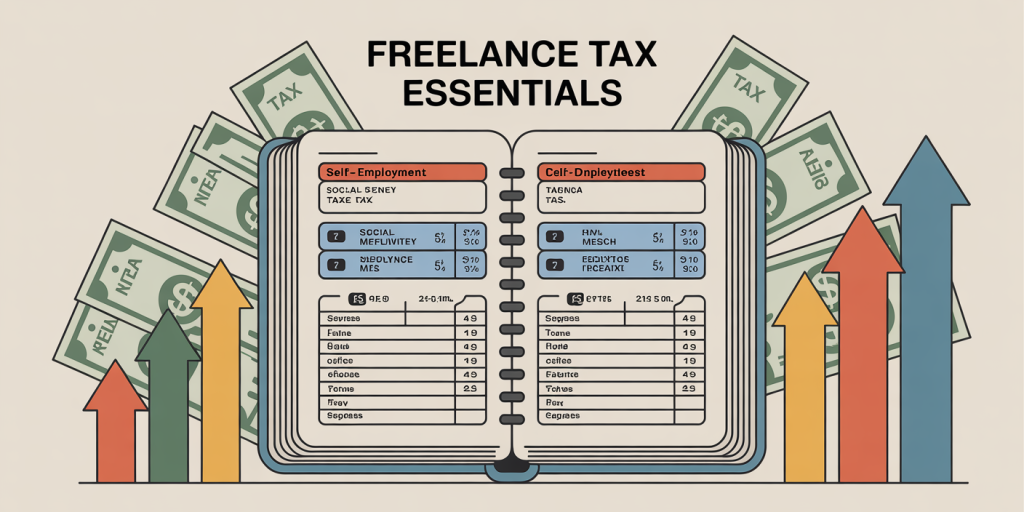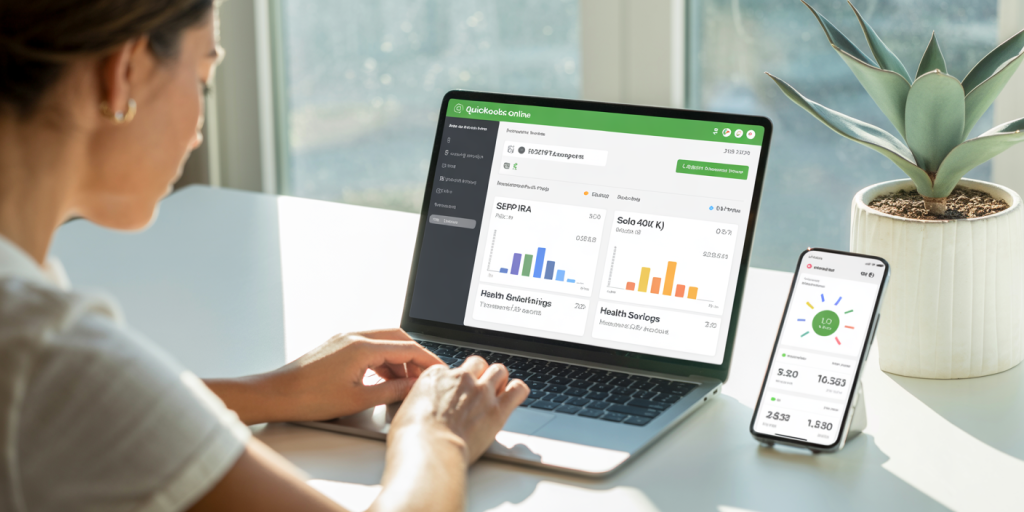Tax Planning for Freelancers: Avoid Surprises at Tax Time
Anúncios
In recent years, freelancing has emerged as one of the most popular and flexible ways to earn a living. According to a 2023 report by Upwork, approximately 59 million Americans freelanced in some capacity, accounting for about 37% of the U.S. workforce. However, this growing workforce segment faces unique tax challenges. Unlike traditional employees, freelancers must manage their taxes independently, which often leads to unexpected liabilities and penalties if not planned carefully. Understanding tax planning is crucial for freelancers to avoid surprises at tax time and maintain financial stability.
Tax planning involves strategically organizing one’s finances and business operations to minimize tax liabilities and comply with legal obligations. For freelancers, this means staying ahead of quarterly estimated taxes, maximizing deductions, and ensuring accurate record-keeping. This article will guide freelancers through essential tax planning strategies, supported by actionable examples, comparative data, and practical insights.
Anúncios

Understanding Freelance Tax Obligations
Freelancers are considered self-employed, which changes the way they report and pay taxes. Unlike traditional employees, taxes are not withheld from payments by clients. Instead, freelancers must calculate and remit taxes, including federal income tax, self-employment tax, and possibly state taxes, on their own. The IRS considers freelancers sole proprietors by default unless they register as an LLC or S-Corp.
One significant difference for freelancers is the self-employment tax, which covers Social Security and Medicare. In 2024, the self-employment tax rate is 15.3%, composed of 12.4% for Social Security and 2.9% for Medicare. For employees, these are split between employer and employee, but freelancers pay the full amount themselves. For example, Jane, a copywriter earning $70,000 annually as a freelancer, would owe approximately $10,710 in self-employment taxes alone, emphasizing the need for proactive planning.
Besides income and self-employment tax, freelancers need to be aware of quarterly estimated tax payments. The IRS requires payments every quarter to cover tax liabilities as freelancers earn money throughout the year. Missing or underpaying quarterly taxes can result in penalties and interest, creating financial strain.
Essential Tax Deductions and Credits for Freelancers
One advantage freelancers have is the ability to deduct eligible business expenses, reducing taxable income and thus tax liability. Common deductible expenses include home office costs, internet and phone bills, office supplies, travel expenses, marketing costs, and professional development.

Take the case of Mike, a freelance graphic designer who uses a room in his apartment exclusively for work. By claiming the home office deduction, which allows a portion of rent, utilities, and other home-related expenses to be written off, he reduced his taxable income by $3,000 last year. The IRS simplified home office deduction offers two options: the simplified method ($5 per square foot up to 300 square feet) and the actual expense method, letting taxpayers choose which suits them best.
In addition to deductions, freelancers should explore tax credits, which directly reduce tax owed rather than taxable income. For instance, the Earned Income Tax Credit (EITC) can benefit low to moderate-income freelancers, and education credits may apply if continuing education relates to their profession. Understanding the difference between deductions and credits helps freelancers maximize savings and avoid overpaying.
| Type | Description | Example for Freelancer |
|---|---|---|
| Deduction | Reduces taxable income | Home office deduction reduces taxable income |
| Credit | Directly reduces tax owed | Education tax credits lower tax bill |
| Carryforward | Applies to losses or credits in future years | Net operating loss deduction |
Strategies to Manage Quarterly Estimated Taxes Effectively
Quarterly estimated tax payments can be a significant hurdle for freelancers, who often experience income variability. These payments are due in April, June, September, and January, covering the current tax year’s income. To avoid penalties, freelancers should estimate income and tax liabilities accurately every quarter, using safe harbor rules or historical data.
One practical approach is to base quarterly payments on the previous year’s tax liability, protecting against underpayment penalties. For example, if Sara earned $50,000 last year and paid $7,000 in taxes, she can pay around $1,750 each quarter this year, regardless of the current income fluctuations. This approach is beneficial for freelancers experiencing stable or rising income.
However, freelancers with irregular income need to monitor earnings monthly and adjust estimates accordingly. Utilizing accounting software with built-in tax calculators can aid in tracking income and notifying about upcoming payment deadlines.
| Payment Period | Due Date | Example Amount (Based on $7,000 Annual Tax) |
|---|---|---|
| Q1 | April 15 | $1,750 |
| Q2 | June 15 | $1,750 |
| Q3 | September 15 | $1,750 |
| Q4 | January 15 (next year) | $1,750 |
Ignoring estimated taxes or delaying payments results in interest charges and penalties. In 2023, the IRS assessed over $1.2 billion in estimated tax penalties, indicating the scale of the problem freelancers face.
Maintaining Accurate Records for Smooth Tax Filing
Good record-keeping is the backbone of effective tax planning. Freelancers must keep detailed records of all income and expenses throughout the year, including invoices, receipts, bank statements, and mileage logs. Organized records simplify tax filing, ensure compliance, and provide documentation in case of an audit.
Jessica, a freelance photographer, uses a dedicated business bank account to separate personal and business transactions. This practice not only prevents confusion but also strengthens her case when claiming deductions. Additionally, she uses cloud-based accounting software for automatic transaction categorization and receipt storage.
The IRS recommends maintaining records for at least three years and longer if certain conditions apply. Freelancers should also track mileage if they use their vehicle for business—deducting either actual expenses based on fuel and maintenance or using the standard mileage rate (65.5 cents per mile in 2024).
Effective organization of records results in significant time savings during tax season and prevents common mistakes such as missing income or over-reporting expenses. Furthermore, it offers peace of mind, reducing the stress commonly associated with tax filing.
Leveraging Retirement Plans and Health Savings Accounts (HSAs)
Strategic contributions to retirement accounts and Health Savings Accounts (HSAs) can both reduce tax burdens and build a financial safety net. Unlike employees whose retirement plans are often sponsored by employers, freelancers need to open and manage these plans independently.

Popular retirement plans for freelancers include SEP IRAs, SIMPLE IRAs, and Solo 401(k)s. SEP IRAs allow contributions up to 25% of net earnings, capped at $66,000 for 2024, making them a powerful tool for tax deferral and retirement savings. Solo 401(k)s provide higher contribution limits combining employee deferrals and employer contributions.
Consider Tom, a freelance web developer, who contributes 20% of his net income to a SEP IRA. For a $120,000 income, Tom can reduce his taxable income by $24,000, saving significantly on income and self-employment taxes.
Health Savings Accounts (HSAs) are another tax-efficient option if freelancers have high-deductible health plans. Contributions are tax-deductible, grow tax-free, and withdrawals for qualified medical expenses are tax-exempt. The IRS allowed maximum HSA contribution limits for 2024 are $4,150 for individuals and $8,300 for families.
By integrating these accounts into their tax strategy, freelancers reduce current tax liabilities and prepare for future financial needs, offering both immediate and long-term benefits.
Emerging Trends and Future Outlook in Freelance Tax Planning
As the gig economy expands, tax laws and technology solutions continue to evolve to support freelancers better. Governments increasingly recognize the growing segment of self-employed workers, leading to new tax regulations and compliance tools.
For example, the IRS has announced plans to enhance information reporting for freelancers and independent contractors, aiming to reduce underreporting of income. This includes improved Form 1099-NEC filing requirements for clients, meaning freelancers will see better documentation of their earnings.
On the software front, Artificial Intelligence (AI) and machine learning tools are becoming integral to financial management. Advanced accounting platforms now offer predictive analytics to forecast tax liabilities based on income patterns, helping freelancers optimize quarterly payments and deductions in real time.
Freelancers should stay informed of legislative changes and technology offerings. Regular consultation with tax professionals remains invaluable, especially to navigate complex tax situations such as multi-state tax filing or international income. Additionally, professional organizations like the Freelancers Union provide updated resources and guidance tailored to this workforce segment.
Looking ahead, increasing automation and tax transparency will likely decrease the number of surprises at tax time for freelancers. However, active and strategic tax planning will remain critical for maximizing income, ensuring compliance, and sustaining business growth in an evolving economic landscape.
Effective tax planning is an indispensable part of financial success for freelancers. Understanding tax obligations, leveraging deductions, managing estimated payments, maintaining accurate records, and utilizing tax-advantaged accounts help avoid costly surprises at tax time. With the right strategies and tools, freelancers can confidently navigate their taxes, empowering them to focus on what they do best—growing their business and career.
